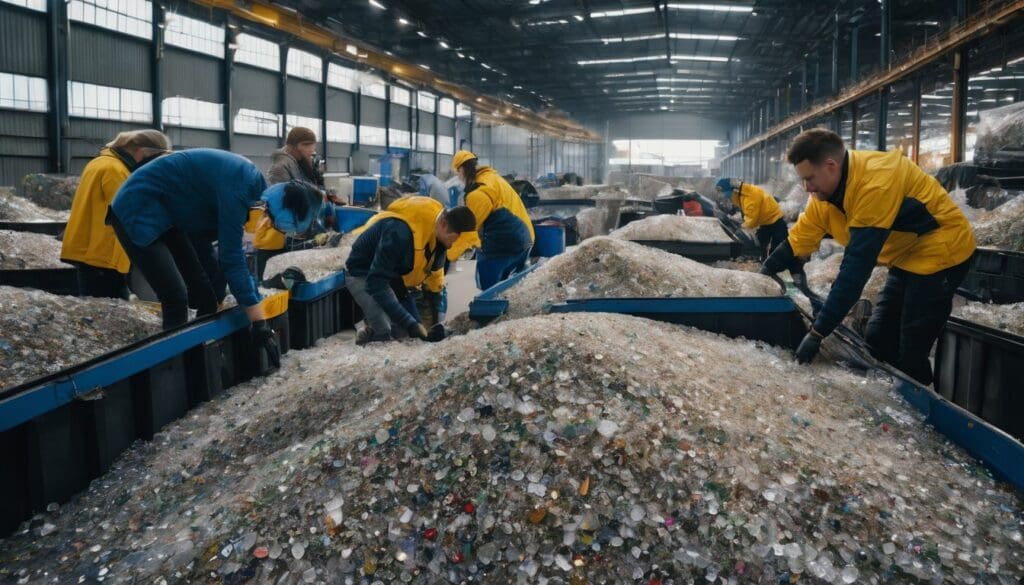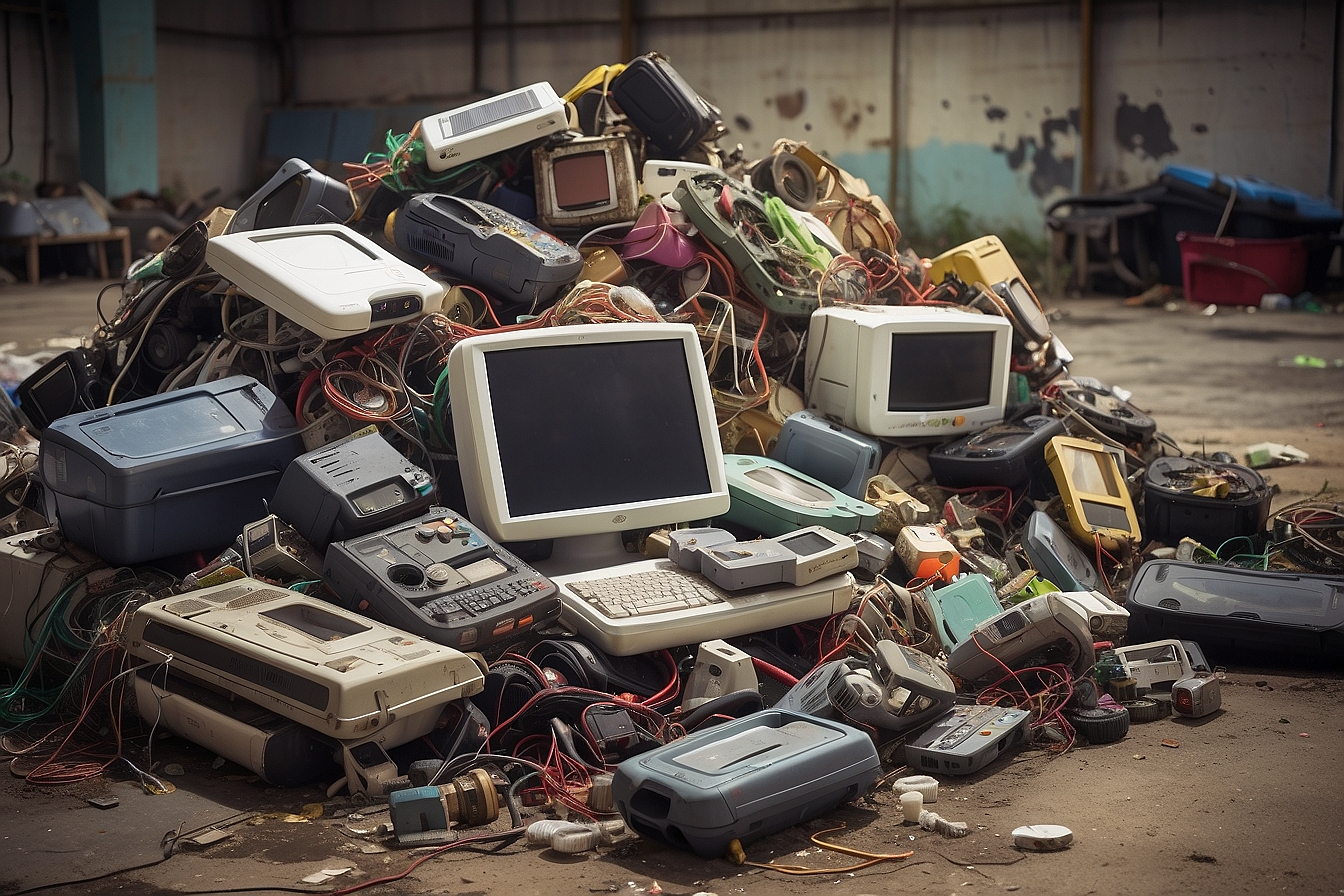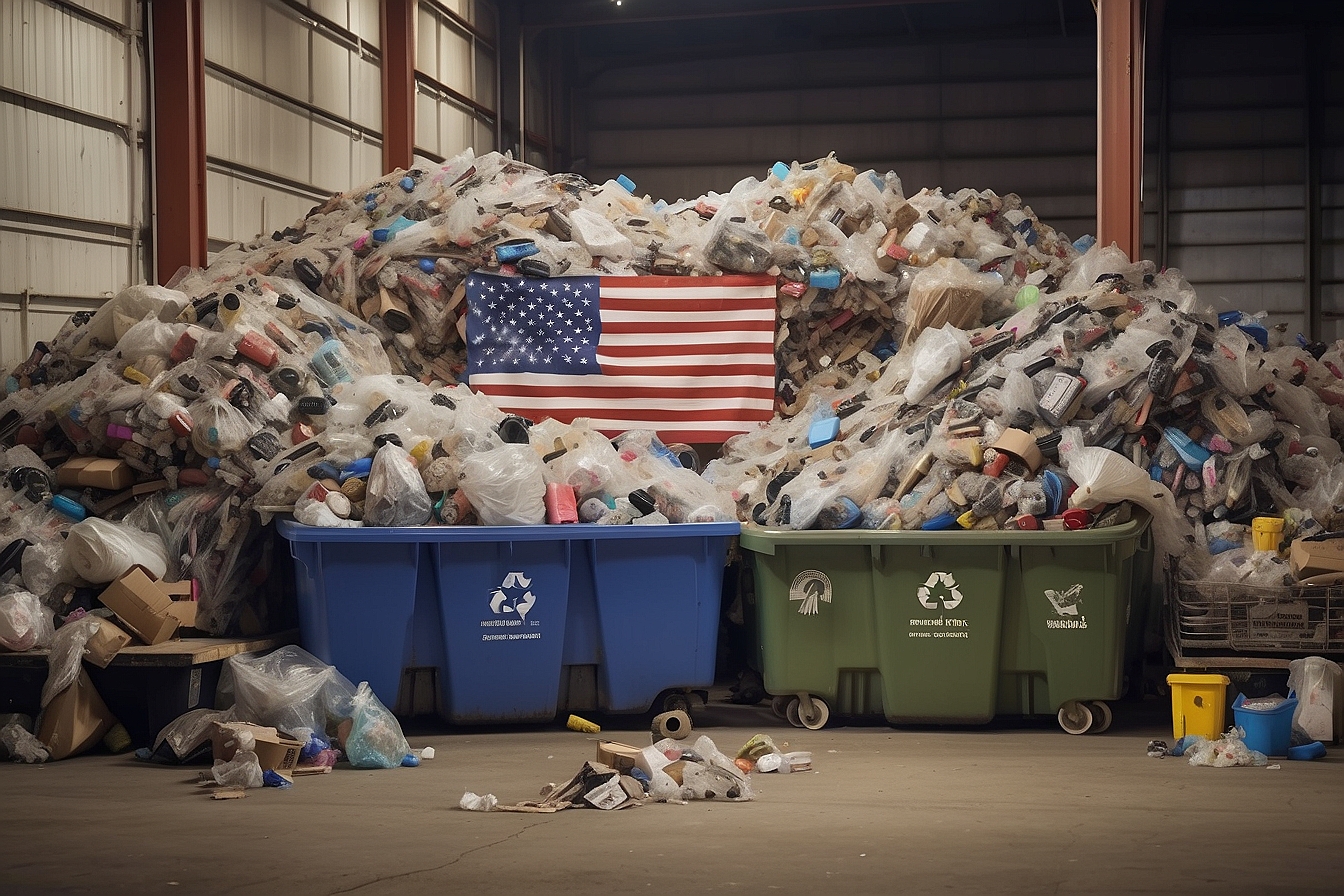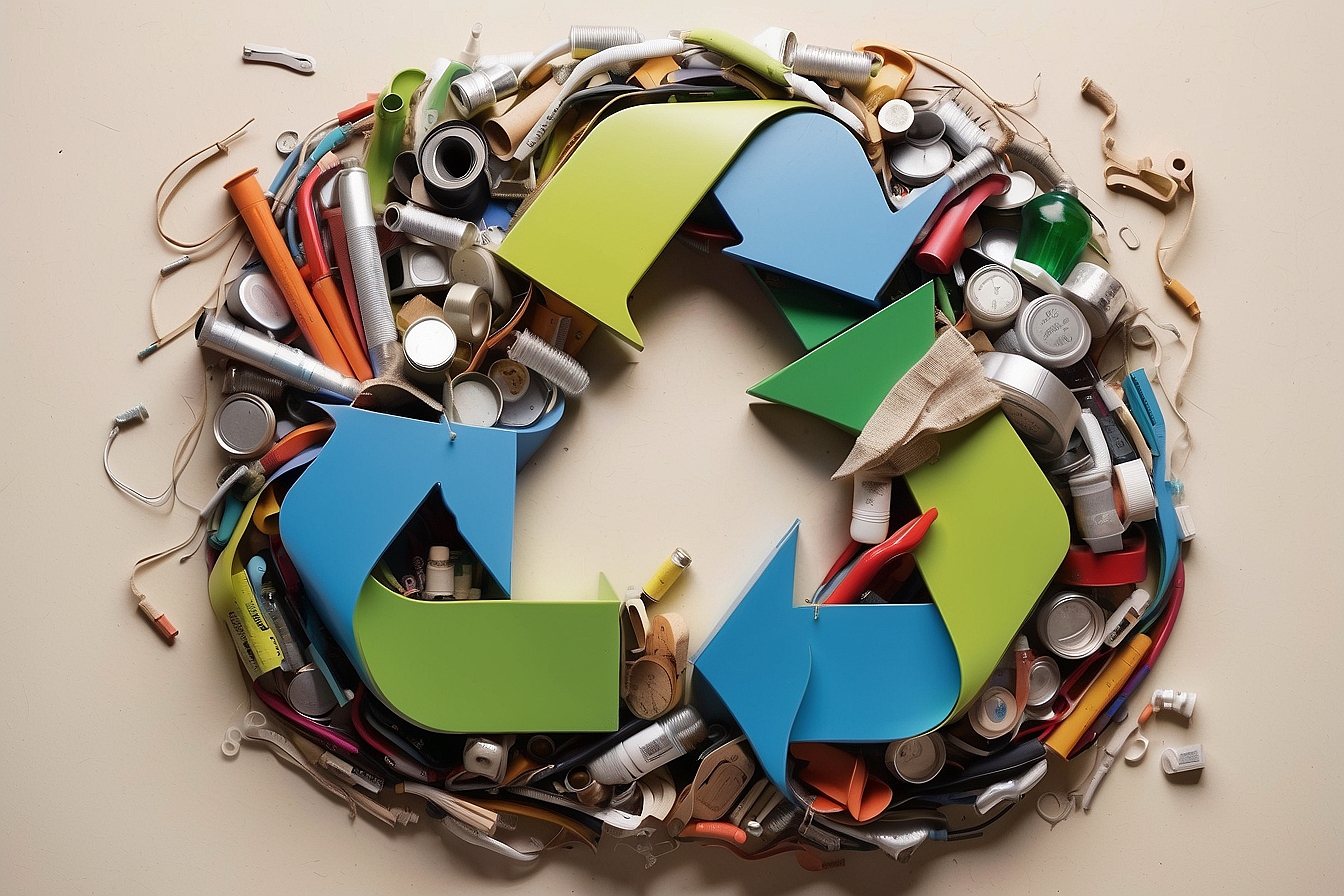Have you ever found yourself staring at the growing mountain of recycling in your home – be it bins brimming with paper, bags bursting with bottles, or boxes crammed with cardboard – and felt a creeping sense of being utterly swamped? Rest assured, you’re far from alone in this.
It’s easy for us to question the impact our diligent sorting has when faced with such clutter. Yet, consider this: every year, countless tonnes of these very recyclables are given new leases on life as they transform into fresh products before our eyes.
In this feature, we’ll navigate the remarkable odyssey these items embark upon – taking a humble departure from our homes and re-emerging as part of innovative creations that span far and wide.
Together let’s explore their transformative tale!
Key Takeaways
- Recyclables are picked up from homes and transported to recovery facilities where they undergo careful sorting by both workers and machines, separating materials like paper, plastic, metal, and glass.
- Sorted recyclables are cleaned and then processed into raw materials which manufacturers use to create new items such as recycled containers and bottles, lessening the dependency on virgin resources.
- The successful transformation of waste into usable products relies heavily on proper sorting at the source; this reduces contamination and improves the quality of end recycled materials.
- By participating in recycling programs and correctly sorting our waste, we play a direct role in conserving natural resources and supporting the circular economy’s effort to minimise environmental impact.
- Continuously practicing good recycling habits ensures that the lifecycle of these products is extended through upcycling efforts, promoting sustainability for future generations.
The Journey of Your Recyclables
Once your recyclables are collected from your home, they are taken to a materials recovery facility where they are sorted and separated. From there, these items go through the process of transformation into new products.
Collection and Sorting
We all play a crucial role in the recycling journey. Through our efforts, recyclable items begin their transformation from waste to sustainable materials.
- We place our residential recyclables at designated pick – up points for collection.
- Waste management trucks transport these items to a materials recovery facility.
- At the facility, workers and machines separate paper, plastics, glass, and metals.
- The sorting process is critical; it ensures that each material can be effectively recycled.
- Magnets extract iron and steel while eddy currents retrieve non – ferrous metals like aluminium.
- Workers remove contaminants that could hinder the recycling process.
- Special screens sort paper by its fibre length, which affects its quality and final use.
- Optical scanners identify different types of plastics based on their resin content.
- Compacting occurs next; baled materials are easier to handle and transport for recycling.
Transformation into New Products
- Recyclable materials are transported to recycling facilities where they undergo thorough cleaning and sorting. This ensures that only quality materials are used for the next step.
- The sorted recyclables are then processed and transformed into raw materials, ready to be used in manufacturing new products. This includes breaking down items like plastic bottles into pellets or melting aluminium cans into raw material.
- These raw materials are then used by manufacturers to produce new products, such as recycled paper, plastic containers, or glass bottles.
- The creation of new products from recyclables reduces the need for virgin materials, leading to waste reduction and a greener way of living.
- By supporting the use of recycled materials in the production process, we contribute to upcycling and promoting eco-friendly practices.
- At this stage, it’s crucial for consumers to continue proper sorting and disposing of their recyclables correctly, ensuring that the cycle continues efficiently.
- Understanding this transformation emphasises the significant impact each individual has on reusing materials and closing the loop on the lifecycle of recycling.
The Role of Proper Sorting
Proper sorting plays a crucial role in the recycling process. When recyclables are sorted correctly, it ensures that materials can be effectively processed and turned into new products.
By separating different types of recyclables such as paper, plastic, glass, and metal, we help to streamline the recycling journey and reduce contamination. This ultimately leads to higher-quality recycled materials that can be used to create sustainable products while minimising waste.
Furthermore, proper sorting at home or in public spaces contributes to the overall success of recycling programs. Through our consistent efforts in sorting recyclables, we actively participate in the evolution of sustainable materials and support eco-friendly practices for a greener future.
Conclusion
As your recyclables begin their journey, they are collected and sorted to ensure the right materials go to the right place. The transformation process turns them into new products, reducing waste and conserving resources.
Proper sorting plays a crucial role in this cycle by guaranteeing the recycling process is efficient and effective. This ensures that your efforts in recycling contribute to a sustainable environment.
FAQs
1. What is the process of recycling?
The process of recycling begins when you start your recycling by sorting materials, which then go through transformation as they are collected and taken to a facility where they evolve into new products.
2. Can you describe the journey of recyclables?
The journey of recyclables involves collecting eco-friendly practices such as separating glass, paper, metal, and plastic so that they can travel from our homes to a place where they become useful again.
3. How do sustainable materials continue their lifecycle after being recycled?
After being recycled, sustainable materials embark on a new chapter; they’re processed into raw form and transformed into brand-new items ready for the next part of their green living adventure.
4. What steps should I take to contribute to the path of recyclables?
To aid in the evolution of recyclables, start by learning how to properly sort your waste according to local guidelines; this ensures each item starts its journey correctly and contributes positively toward ecofriendly practices.





